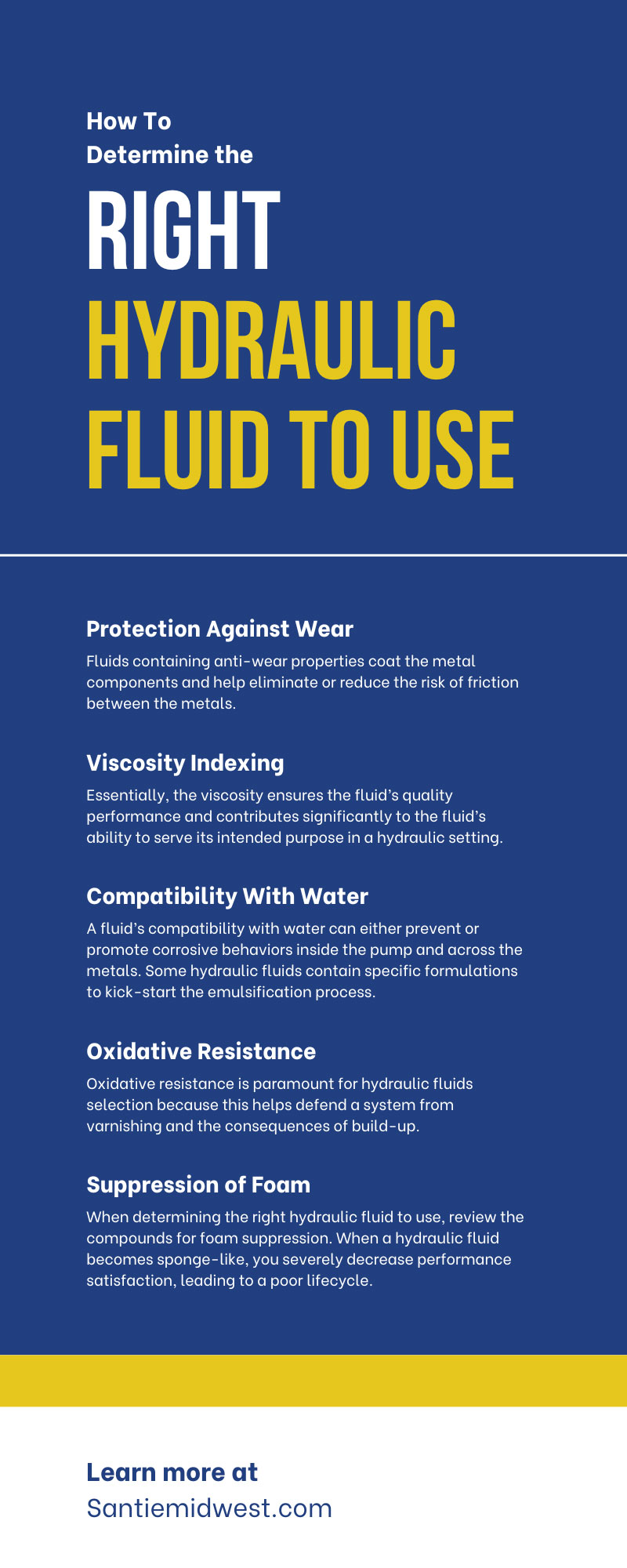There are various components that determine how well a facility, machine, and system can perform. For tractors and other related equipment, one core ingredient of performance satisfaction, equipment longevity, and enhanced production is the hydraulic system and the fluids used.
Choosing the right hydraulic fluid can make or break a system’s performance and basic functions, so it’s critical to understand what makes a specific formulation the best choice for your tractor’s hydraulic setup. Here, we discuss the various elements contributing to hydraulic fluids to help you make the best decision for your tractor.
System Performance Satisfaction
Your satisfaction with your system’s performance is a valuable aspect of fluid selection. Some systems require specified fluids and lubricants that provide optimal performance benefits, but sometimes, users can choose the ideal system fluid. However, any time the fluids are at user discretion, you must ensure you maintain system integrity and production efficiency.
One key way to ensure overall satisfaction is to understand that the hydraulic system and the fluid function simultaneously as one body of work. When users understand this element, they can better sustain the lifespan and efficiency rates of the hydraulic system.
Some signs that the hydraulic elements and system are not performing optimally include increased heat, excessive varnish or sludge, a complete lack of lubricity, and an overall reduction in efficiency. Contamination is another factor that plays a role in some of these performance satisfaction issues.
Next, we will examine some vital characteristics to look for when going through the hydraulic fluid selection process.
Vital Characteristics To Look For
The characteristics worth paying the most attention to will aid in your overall satisfaction with a given hydraulic system. These are the core elements that create fluid production worthy of supporting machines long-term and lend a hand in how well machines perform. Let’s take a closer look below.
Protection Against Wear
Protection against wear often pertains to metal-to-metal contact and is essential for hydraulic pumps. Fluids containing anti-wear properties coat the metal components and help eliminate or reduce the risk of friction between the metals. Most formulas for increased wear protection contain zinc additives. However, it’s worth noting that you can acquire a formulation without the addition of zinc.
Viscosity Indexing
Hands down, the viscosity of the hydraulic fluid is one of the most critical elements to consider and maintain. Essentially, the viscosity ensures the fluid’s quality performance and contributes significantly to the fluid’s ability to serve its intended purpose in a hydraulic setting. When a hydraulic fluid contains optimal viscosity indexing, many users find that the pump performs better and simultaneously decreases the amount of energy that they lose within the system.
A core feature of ensuring optimal viscosity ranges includes monitoring the overall temperatures and reducing the number of severe fluctuations. So what does this mean? The viscosity serves the system best in a cold temperature placement by allowing it to operate freely. A steady flow of fluid in a cold setting can increase mechanical functions, promote a reduction in wear, and create an overall faster pump rate.
It’s also worth noting that a hotter temperature placement creates a film on the metal components that encourages the lifespan of the pump and aids in deterring overheating of the components.
The flow and temperature are relative to one another when it comes to viscosity indexing. To determine the best VI for your hydraulic system, take into consideration the performance satisfaction of the machine and the ideal temperature placement for proper functions. When a viscosity index is at the high end, it will promote more feasible run times at varying temperature settings. A high viscosity index is optimal for cold starting a machine.
It is not uncommon for technicians and manufacturers to recommend fluids with higher VIs because they allow more tolerance in temperature ranges and protect against increased wear on the higher end. Generally, this recommendation serves users best because it decreases basic operational expenses and increases production.
Compatibility With Water
A fluid’s compatibility with water can either prevent or promote corrosive behaviors inside the pump and across the metals. Some hydraulic fluids contain specific formulations to kick-start the emulsification process.
Often, industrial users have the capability of manually removing the sitting water, but this is only available after the separation of fluids takes place. For mobile applications, such as tractors, it can be challenging for users to perform the manual removal process because, sometimes, the water remains in the suspended encapsulation.
Oxidative Resistance
Oxidative resistance is paramount for hydraulic fluids selection because this helps defend a system from varnishing and the consequences of build-up. Typically, a hydraulic system will function optimally at a higher temperature placement. The only downside to this matter is the oxidation occurring at these high heat values.
High heat oxidation draws in sludge and varnish, creating a thicker-than-necessary fluid composition. While a sub-par fluid is more cost-effective upfront, it will increase the costly effects of oxidation on metal and vital hydraulic system parts. Investing in fluids with oxidative resistance can help prevent the consequences of oxidation and keep valve build-up at bay.
Suppression of Foam
When determining the right hydraulic fluid to use, review the compounds for foam suppression. When a hydraulic fluid becomes sponge-like, you severely decrease performance satisfaction, leading to a poor lifecycle. It’s also worth noting that the hydraulic pump is at extreme risk of malfunctioning or disorientating when the foam is present. Selecting a fluid with an ideal foam suppression property is the best way to ward off these issues.
Determination Measures With Santie
A core step in ensuring your fluid selection is ideal for long-term performance is partnering with a reputable and reliable distributor of hydraulic fluids. Santie Oil Company delivers industry-leading knowledge and experience to each contact and can lend a hand in your selection process.
We work with the industry’s top brands and compositions to ensure we offer our customers the best range at even better values. To equip your facility and machines with high-quality tractor hydraulic fluid and ensure healthy performance satisfaction, partner with us today!


